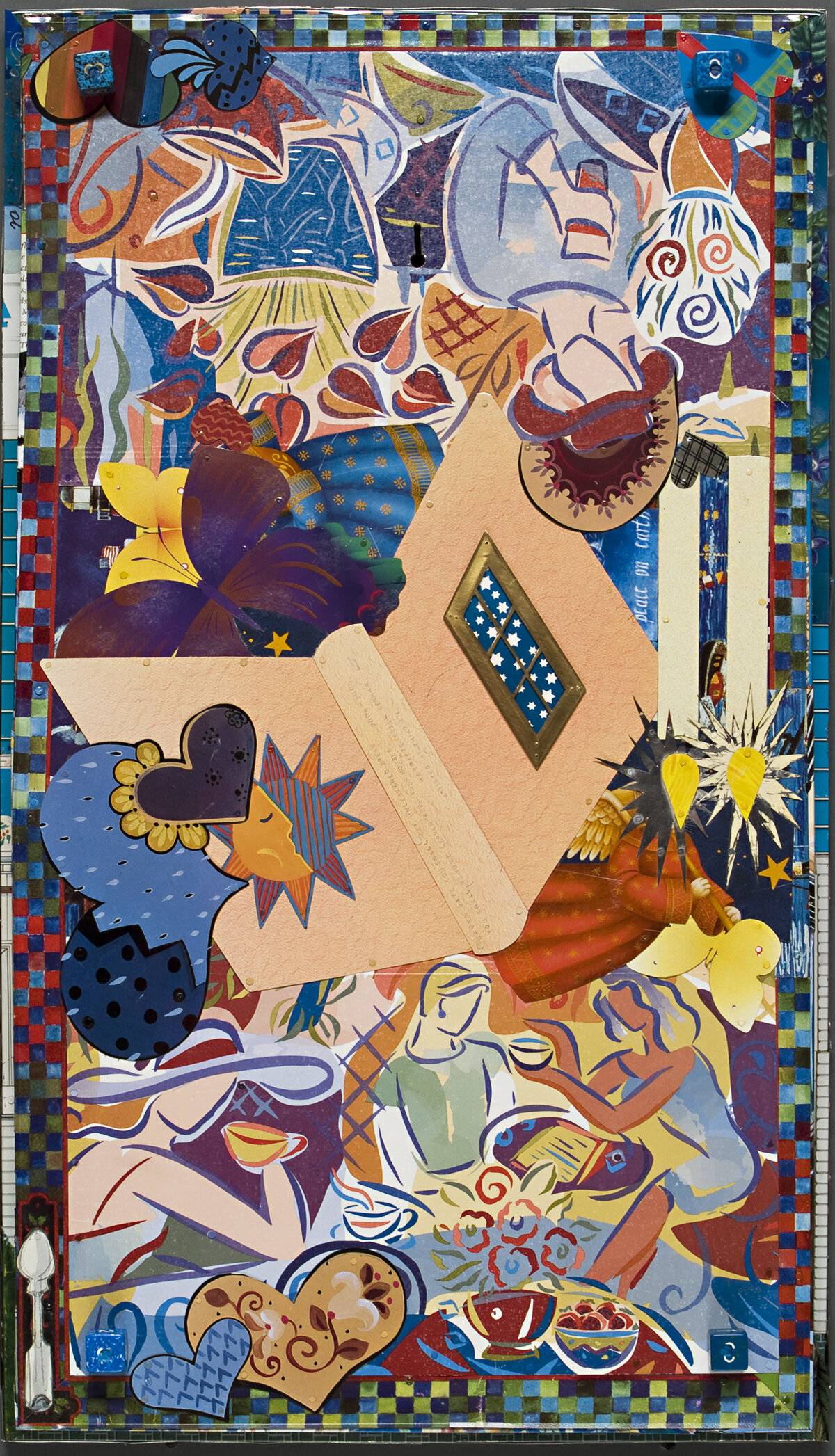Seven Days You Shall Eat Unleavened Bread,
You Shall Remove Leaven From Your Houses
from the series:
An Orange Belongs on the Seder Plate
Within each window pane is a Hebrew word that corresponds to a symbolic food from the Seder service.
Seder plate constructed using pre-printed steel from vintage doll houses and recycled tin cans. Hebrew lettering is constructed using recycled tin containers to represent each food on a Seder Plate.
This seder plate has a total of six windows with symbolic references to the Seder service. Each window in the diagram is numbered to correspond to the written explanation. Window panes are removable Plexiglas. Aluminum & 10k gold rivets, steel screws, brass, dice.
Plexiglas panes in each window make this seder plate fully functional.
2.5” height x 13.75” width x 23.75” length
Available for purchase or exhibition.
Traditionally, the Seder plates outline five symbolic foods: lamb shank bone, parsley, roasted egg, horseradish root, and haroses.
See below for more details.
The frame shows layers of dollhouse images including a wall, balcony, stairs, and cabinet. The Seder takes place in your home. Family and friends are invited to celebrate this joyous holiday.
The Hebrew word for parsley is green (shown above) is a symbol of spring.
The Hebrew word for eggs is in the panel on the upper right. A roasted egg is placed on the Seder plate. The roasted egg on the Seder plate symbolizes the festival sacrifice in Biblical times at the temple in Jerusalum. It could also be a symbol of spring and rebirth of the Jewish people.
The tree and hands on the right side of the panel were taken from a Jewish National Fund tin tzedakah box.
The left word (immediately above left) refers to the Pascal lamb.
The orange is a recent addition to the Seder Plate (right panel). The story goes that during a heated discussion about whether women should be ordained as rabbis, a heckler called out that a woman belongs on the Bimah (the pulpit) as much as an orange belongs on a Seder plate.
Since then an orange is placed on the Seder plate as a statement about women's participation (as well as gay and lesbian leadership) in Judaism. Tradition and observance unite to celebrate this festive occasion.
The left Hebrew lettering (immediately above) is cut from recycled tin cans printed with images of apples. It symobolzes Charset, a combination of chopped apples and raisins soaked in wine resembles mortar used by the Israelites to make bricks for the pyramids.
The (right panel immediately above) is Hebrew lettering (in brown) to symbolize Maror. This is where you would place the Horseradish root. a bitter herb and reference to the lives of the Israelites.
To the far right side panel is the Cup for Elijah, and Mirriam’s cup.
The Haggadah narratives the journey, or exodus of the Jewish people for 40 years.
The waves at the bottom of the Seder plate (one wave on each side) represent the parting of the Red Sea so the Jewish people could miraculously escape the Pharaoh's army.
The back of this Seder plate (shown below) is only visible if you own the Seder Plate or look on this website. The images are a collage of images from recycled tin cans inspired by the Seder service.
Look for the images of a book and holiday candles.
© 2003, 2021, 2023 Harriete Estel Berman





